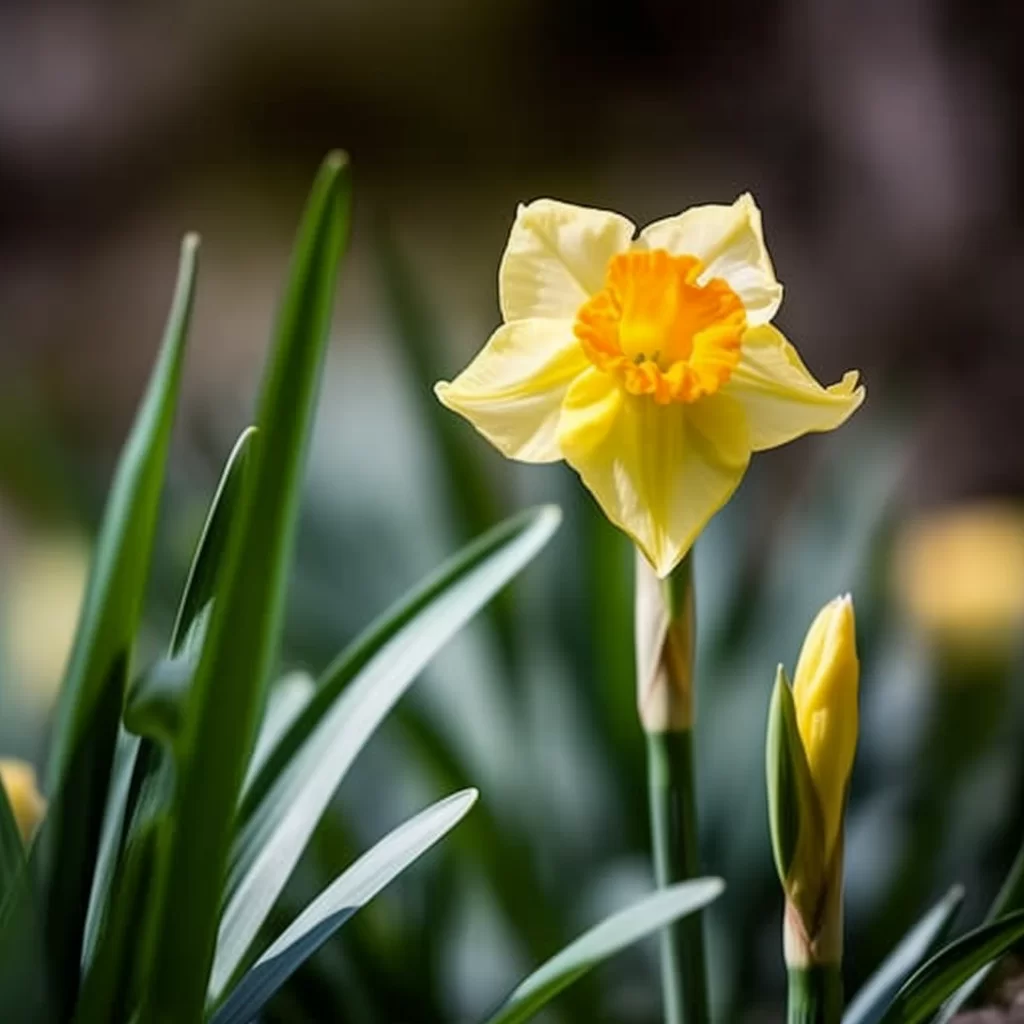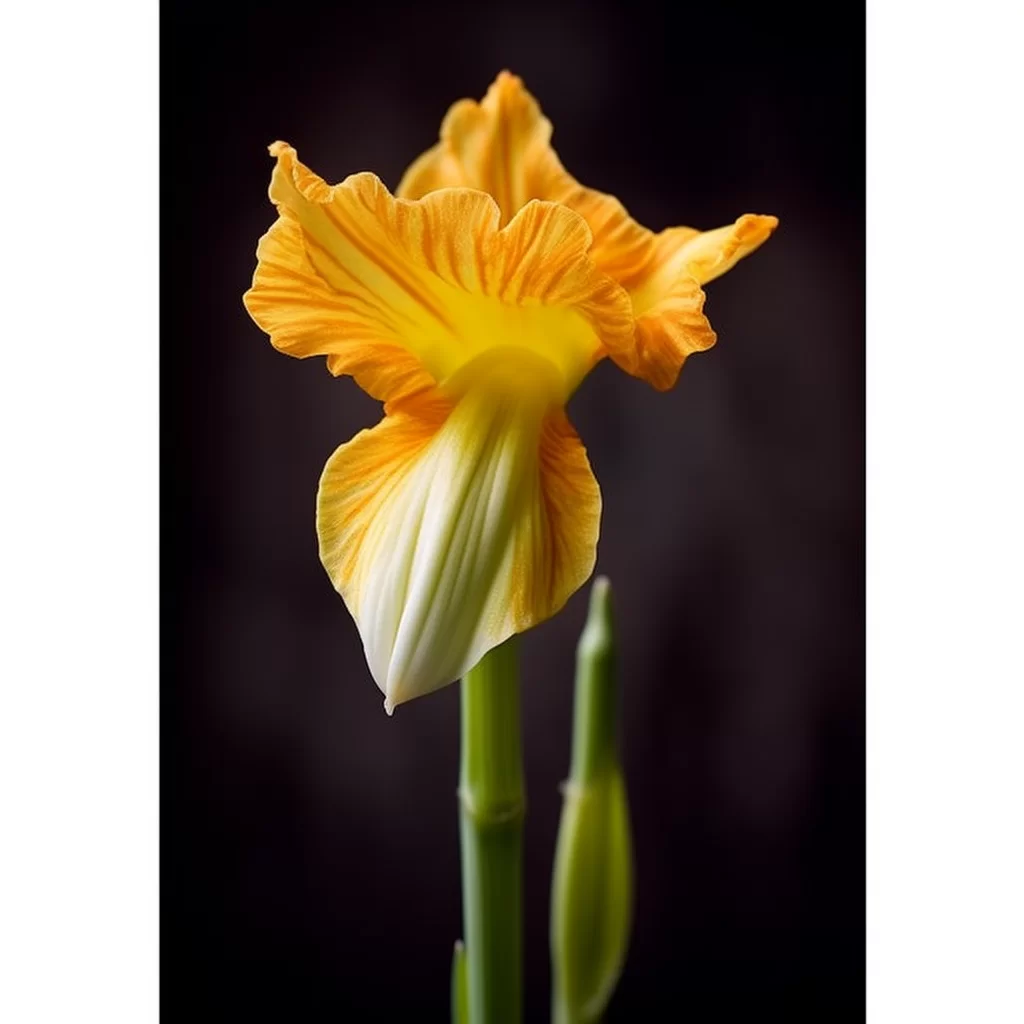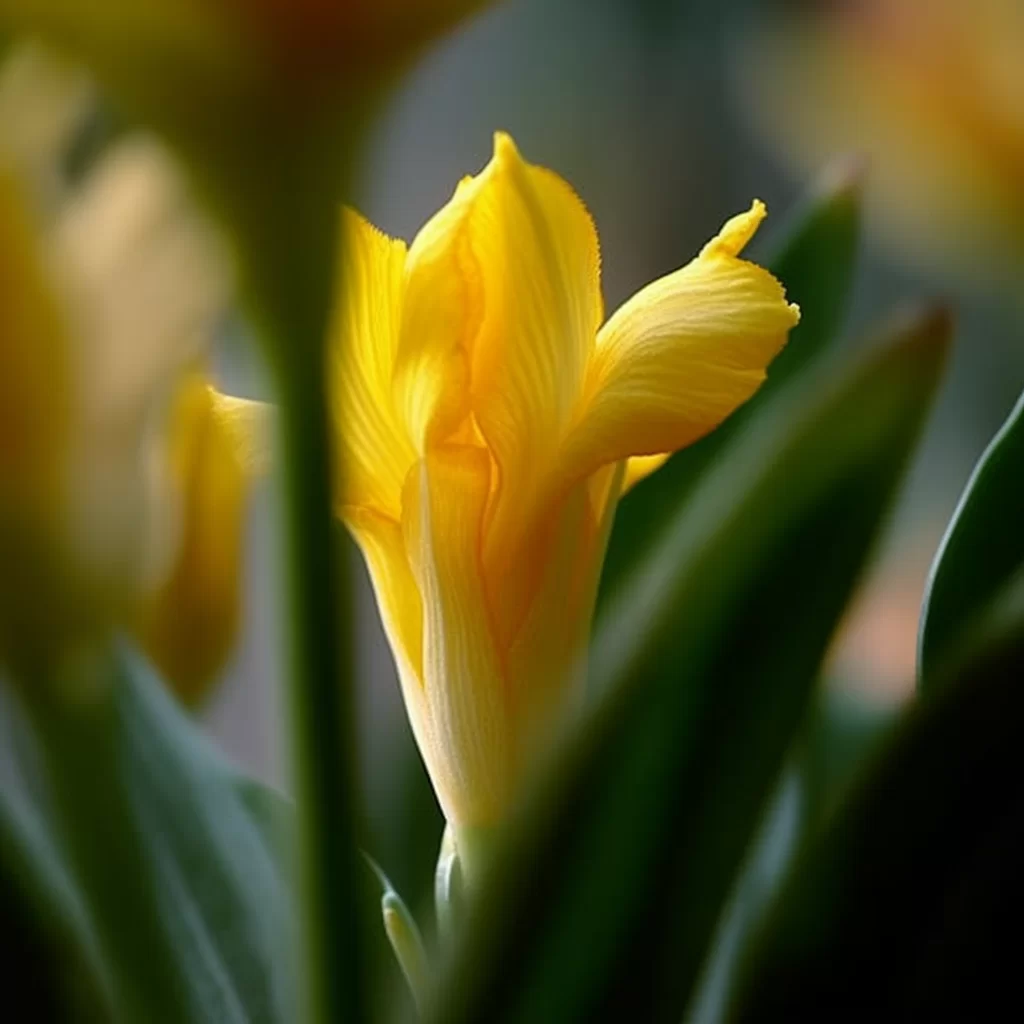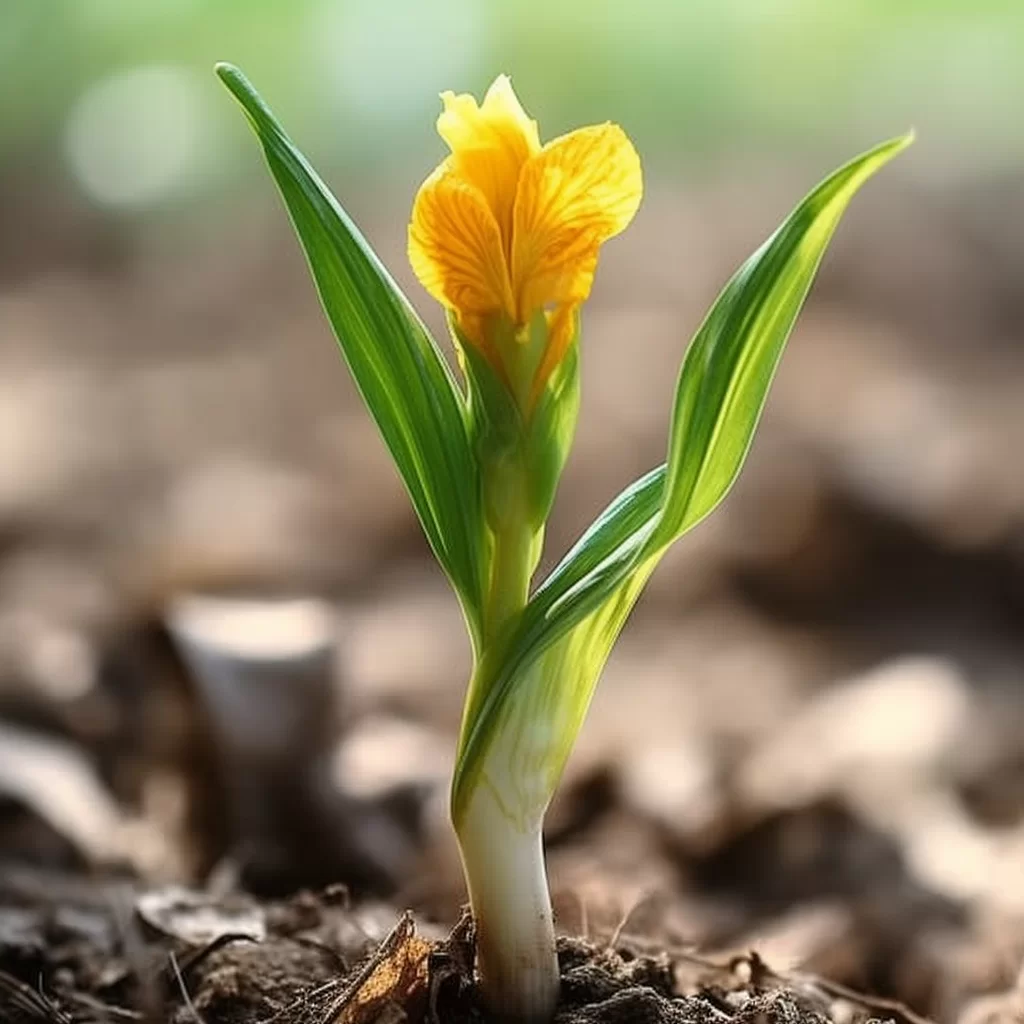Story of Day :
Contents
The Daffodil Plant: A Complete Guide and Care Tips
As the weather gets warmer and the days become longer, it’s time to bring some life back to your garden.
Daffodils are a perfect way to do this, as they add a pop of color and vibrancy that can brighten up any outdoor space.
With their cheerful yellow petals and trumpet-shaped centers, daffodils are a popular choice for many gardeners because they’re easy to grow and maintain.
If you’re looking to plant some daffodils in your garden but don’t know where to start, don’t worry – it’s easier than you might think! In this article, we’ll give you all the information you need on how to plant and care for these beautiful flowers so that they can thrive throughout the spring season.
Whether you have a small patch of land or a large backyard space, daffodils are sure to bring beauty and joy into your life – so let’s get planting!
Planting Daffodils
Growing daffodils can be a fun and rewarding experience, but it’s important to start off on the right foot.
One of the most crucial steps in growing these beautiful flowers is knowing when to plant them.
To give your daffodils a strong foundation for growth, it’s best to plant them in the fall season – specifically around September or October.
By doing so, you’re allowing enough time for the bulbs to establish their roots before winter arrives.
This will help ensure that they are well-nourished and ready to grow come springtime. Planting daffodil bulbs in the fall also sets them up for success by taking advantage of natural seasonal changes.
Planting daffodil bulbs in the fall also sets them up for success by taking advantage of natural seasonal changes.
As temperatures begin to cool down and sunlight lessens through autumn months, plants tend to focus more on root development rather than shoot growth.
This means that planting during this time period can lead to stronger root systems than planting later on would allow for since there is still enough warmth and sunlight present for proper development.
Allowing your daffodils ample time in the ground before winter will give them a head start towards blooming beautifully once warmer weather returns!
- Select an area of your garden that receives full sun or partial shade.
- Dig a hole about six inches deep and twice as wide as the bulb.
- Place the bulb with its pointed end up into the hole.
- Cover it with soil and water thoroughly after planting.
If you’re eager to bring a bit of garden magic indoors during the colder months, planting bulbs in pots is a wonderful option.
All you need is some good quality potting soil that has excellent drainage.
Choose your favorite bulbs and plant them in the pots before placing them near a sunny window or under artificial grow lights.
It’s important to keep an eye on your plants and ensure they have enough water without becoming waterlogged.
Once spring arrives, you can transplant them outside where they’ll continue to thrive.Indoor planting offers an exciting way to add some greenery and color to your living space, especially when it’s too early or too late for outdoor gardening.
With a little investment in time and effort, you can create beautiful indoor gardens with stunning blooms from bulbs such as tulips, daffodils or hyacinths that offer delightful fragrances as well as attractive visuals.
Growing these types of plants indoors requires careful attention paid towards their specific needs for lighting requirements, soil quality and watering habits; but it’s definitely worth the effort when you see those first shoots beginning to appear!
Caring for Daffodils
Once you have planted daffodil plants correctly, you’ll be pleased to know that they need very little attention.
These beautiful flowers are easy to care for and will flourish with minimal maintenance.
To ensure your daffodils continue to thrive, it’s important to follow a few simple tips.
Make sure they receive plenty of sunlight and well-drained soil, as these are crucial factors in their growth.
Deadheading the spent blooms can also help promote new growth and extend their blooming season.In addition to providing them with adequate water during dry spells, avoid over-watering as this can cause bulb rot.
Daffodils are hardy plants that require virtually no fertilization and should be left alone throughout their natural growing cycle unless there is an obvious problem like insect damage or disease.
With proper care, these stunning flowers will remain vibrant for years on end without demanding much of your time or effort!
To keep your daffodil plants healthy, it’s important to give them enough water.
However, be careful not to overdo it as this can lead to bulb rot and ultimately damage the plant.
The frequency of watering will depend on factors such as the weather conditions and soil type, but a general rule of thumb is to water thoroughly once or twice a week.
You can also monitor the soil moisture level by sticking your finger in about an inch deep – if it feels dry, then it’s time to water. Remember that daffodils don’t like sitting in standing water for extended periods, so make sure that any excess water drains away from the roots.
Remember that daffodils don’t like sitting in standing water for extended periods, so make sure that any excess water drains away from the roots.
If you’re unsure about when or how much to water your daffodil plants, consider using a moisture meter or consulting with a gardening expert for guidance.In summary, keeping your daffodils hydrated is crucial for their growth and health but be mindful not to overwater them as this could damage their bulbs.
Proper attention will ensure beautiful blooms year after year!When it comes to taking care of your daffodils, fertilizing is an important task.
But don’t worry, you don’t have to spend a lot of money on special fertilizers for these bright and beautiful flowers.
Instead, you can opt for organic compost or a balanced fertilizer that can easily be found in any garden center.
The best time to fertilize your daffodils is during early spring when the plants start growing new leaves.
This will provide them with the necessary nutrients they need to thrive throughout the season.Using organic compost as a natural fertilizer for your daffodils has several benefits.
Not only does it add valuable nutrients back into the soil, but it also helps improve soil health by encouraging beneficial microorganisms and earthworms that break down organic matter and enrich the soil with essential minerals.
Similarly, using a balanced fertilizer ensures that all necessary nutrients are provided in equal proportions without risking over-fertilization which could lead to burning of foliage or roots damage.
With proper fertilization techniques and regular care, your daffodils will bloom beautifully year after year! Deadheading is a popular gardening technique that involves the removal of spent flowers from plants.
Deadheading is a popular gardening technique that involves the removal of spent flowers from plants.
This process helps to prevent energy waste and encourages more blooms in the following year.
When a flower dies, it signals to the plant that it’s time to stop producing new buds and seeds.
By removing these dead flowers, you’re telling the plant that its job isn’t done yet and there are still opportunities for growth and reproduction.Deadheading is especially important for plants like roses, which can produce dozens of blooms in a season if properly cared for.
By removing spent flowers regularly, you’re helping these plants focus their energy on producing new buds instead of wasting resources on dying ones.
Deadheading can be done using pruning shears or simply by pinching off the dead flower with your fingers.
With just a little bit of effort, you can help your garden look fuller and more vibrant than ever before!Daffodils are a type of flower that can multiply quickly each year.
It’s important to divide the bulbs every three to five years in order to keep them healthy and blooming.
This should be done in late summer after the foliage has died back.
To divide the bulbs, simply dig out the clumps and separate them into individual bulbs before replanting them.By dividing daffodil bulbs regularly, you ensure that they have enough space to grow and develop properly, which results in more beautiful blooms.
Neglecting to divide them can lead to overcrowding which can cause stunted growth or even death of some of the flowers.
Additionally, dividing daffodil bulbs allows you to spread these lovely flowers across different areas of your garden or share with friends who also enjoy gardening.
With this simple task, you can enhance your garden’s beauty and ensure that your daffodils continue blooming for many years to come!Daffodils are pretty low-maintenance flowers when it comes to pests and diseases.
However, they can sometimes become a tasty snack for slugs and snails.
If you’re worried about your daffodils falling prey to these slimy critters, there are a couple of things you can do.
Firstly, try using slug bait to deter them from getting too close.
Another option is placing copper rings around your plants – this method works because copper creates a small electric charge that is unpleasant for slugs and snails to touch.While daffodils may not be the first flower that comes to mind when thinking about pest control, it’s good to know that these yellow blooms are fairly resilient against most invaders! In some cases, though, slugs or snails might decide they fancy a bite of daffodil leaves or petals – but don’t worry too much! To keep unwanted visitors at bay, consider using slug bait or copper rings around your plants.
Both options should help stop these pesky creatures in their tracks and allow your lovely daffodils to thrive without any issues!
The Benefits of Planting Daffodils
Daffodil plants are more than just a pretty sight in gardens and parks.
In fact, they offer various advantages that extend beyond their visual beauty.
These flowering plants have been linked to an array of emotional benefits, such as reducing stress levels and improving overall mood.
Additionally, daffodils are often used in aromatherapy to help individuals relax and sleep better.Daffodils also have medicinal properties and can be utilized for healing purposes.
For instance, the bulbs of these plants contain alkaloids that have antiviral properties making them useful in treating various medical conditions like cold sores or herpes outbreaks.
Furthermore, studies suggest that consuming small amounts of daffodil bulb extract may contribute to improved heart health by reducing cholesterol levels.
Overall, it is clear that this ornamental plant has numerous functions beyond its decorative appeal making it a valuable addition to any garden or landscape project.
- Daffodils are deer-resistant meaning that they won’t be eaten by dear – making it an excellent choice if you live near woodland areas where deer may roam.
- Daffodil bulbs have medicinal properties as they contain alkaloids that have been used for centuries in traditional medicine for treating respiratory ailments and infections.
- Daffodils are also known as “Lenten Lilies” because they bloom around Easter time making it the ideal flower for Easter celebrations!
After carefully analyzing and considering all the information presented, it can be concluded that the topic at hand has been thoroughly discussed.
The main arguments and points have been brought to light and analyzed with appropriate evidence.
This conclusion is a summary of all that has been discussed thus far, drawing from multiple sources of information.Furthermore, this conclusion serves as a call to action or a final thought on the topic.
It may provide suggestions for future research or highlight the importance of implementing certain changes in policies or practices.
Overall, this section provides closure for readers by summarizing key takeaways while also opening up avenues for further exploration and development of ideas related to the topic at hand.
Are you looking for a burst of colors in your garden this spring? Look no further than the daffodil! These vibrant yellow blooms will add a touch of sunshine to any outdoor space.
And don’t worry about high maintenance, these plants require very little care and attention.
They are perfect for busy gardeners who want stunning results without putting in too much effort.
Plus, the benefits of planting daffodils go beyond aesthetics – they are known to deter pests and even help purify the air.To ensure you get the most out of your daffodils, follow our planting and caring tips.
With just a little bit of guidance, you’ll be rewarded with beautiful blooms that will brighten up your garden year after year.
So why not give these low-maintenance flowers a try? Your garden (and maybe even your mood) will thank you!